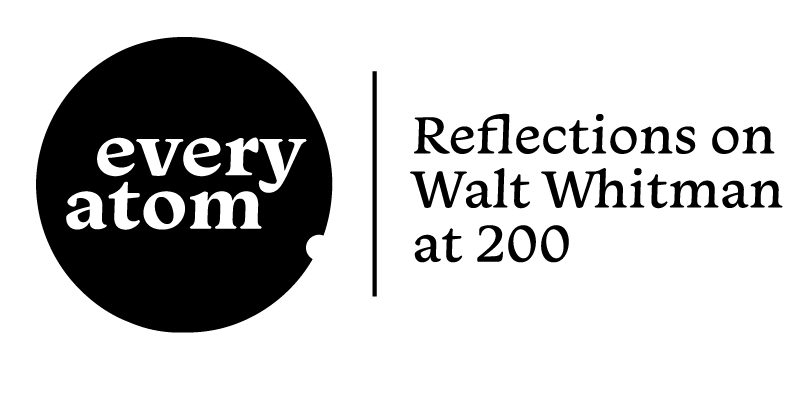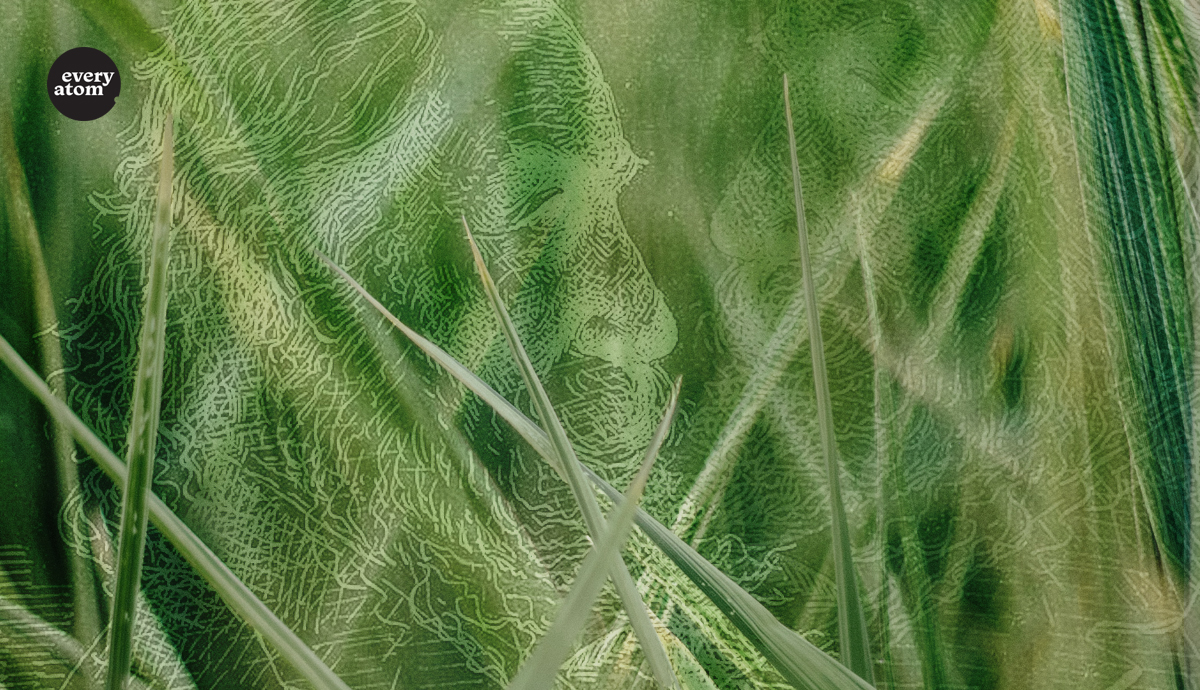Every Atom | No. 162
Introduction to Every Atom by project curator Brian Clements

These were the words I had been longing to hear when I was thirteen years old, browsing the eighth grade reader in Birmingham, Alabama, for possible guidance if not sustenance. I loved/devoured that utterance immediately and savored its terms, bite by bite.
Loafe? I knew it as a casual word belonging to the speech of laboring folks, about being lazy when they should be working; but here, loafe was accepted and yoked with a word of manners and courtesy—invite—a term that smacked of gentility and birthday parties but here paired with the working man’s loafing; and then,
oh gasp!: my soul—the very thing, unknown, that I worried about and wanted to understand. Yes, I wanted to know my hidden soul, which must really be myself, and here this poet was telling me how: I must loafe (not study so hard, not be anxious) and invite, which meant not to grab or coerce but to be courteous and unhurried, and to open the door gently and wait patiently. Yes, not to be impatient or anxious but merely to wait patiently for my soul to come to me, my most intimate friend, someone easy and comfortable to talk with. Soul—this poet had dared to give a name for what I was trying to discover, or create, my soul.
The well of essential-me filled with gratitude.
So that’s what Walt Whitman gave me, the foundation of all my writing, and I recognized it and treasured it: still in grade school, as we called it then, with much schooling and living ahead. But because of fragments quoted in an eighth grade reader, I’d had a glimpse of the truly great, of what could be created with language, and (without doubt) Whitman gave me the supreme satisfaction of reading, chewing, and digesting language itself as experience.
But that’s not all, please; I’d like to tell you, while I’ve got your ear, about when Walt Whitman came to visit me:
It happened when I was a young teacher, with my first post-graduate job teaching creative writing at the University of Montana. I lived out of town; my address: Rose Acres Farm, Upper Rattlesnake, Missoula, Montana. It was isolated, a cottage with an enormous stone fireplace. Christmas vacation; people had gone home but I couldn’t afford to fly back to Alabama (I couldn’t afford to have my shoes re-heeled; that cost $1.50 each), and I was alone and very sick with the flu. I needed help . . . and . . . so . . . Abraham Lincoln came to sit beside me; he looked just as he does in his monument in D.C.: long-limbed but sitting in a suitable chair. However, he turned out not to know anything about nursing and couldn’t help me. So he was whisked away in a mist, replaced, and Here was Walt Whitman, whom I knew to have been a nurse in the Civil War, so he came—to put his hand on my hot forehead—and helped me.
Fast forward: a credo: I have tried to make my classes, my workshops, like Whitman’s grass: a place where we might loll and be refreshed—be exacting and honest in our introspection—where we might feel comfortable and hopeful, where our learning was as basic and peaceful as—yes, again—our lying in the grass with the still-seeming earth below.
Recommended
Nor’easter
Post-Op Appointment With My Father
Cedar Valley Youth Poet Laureate | Fall 2024 Workshop






